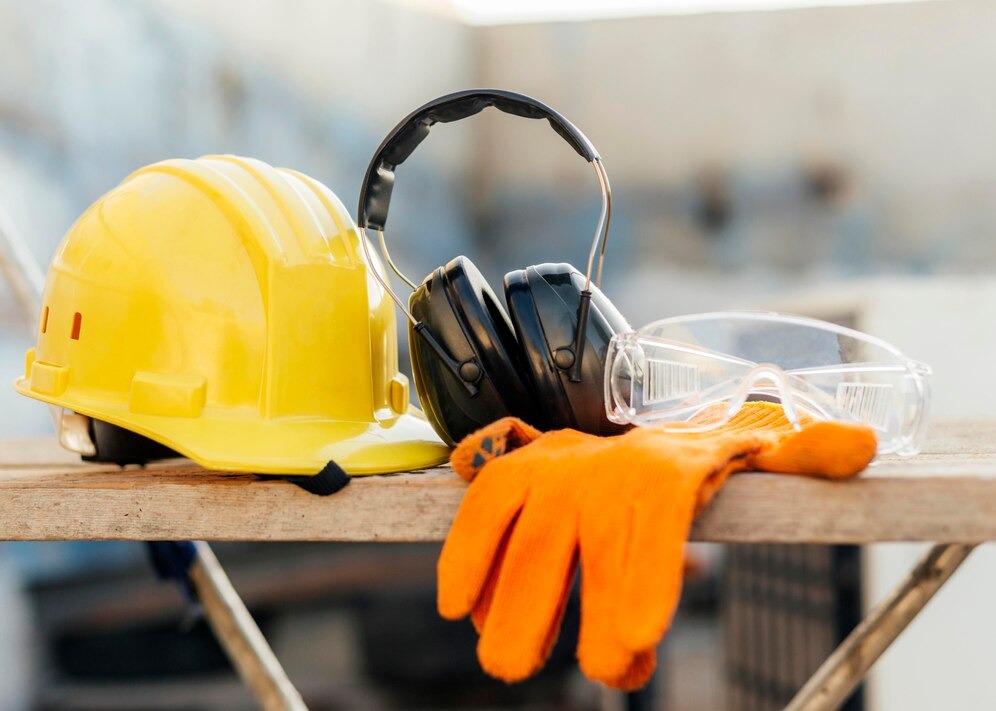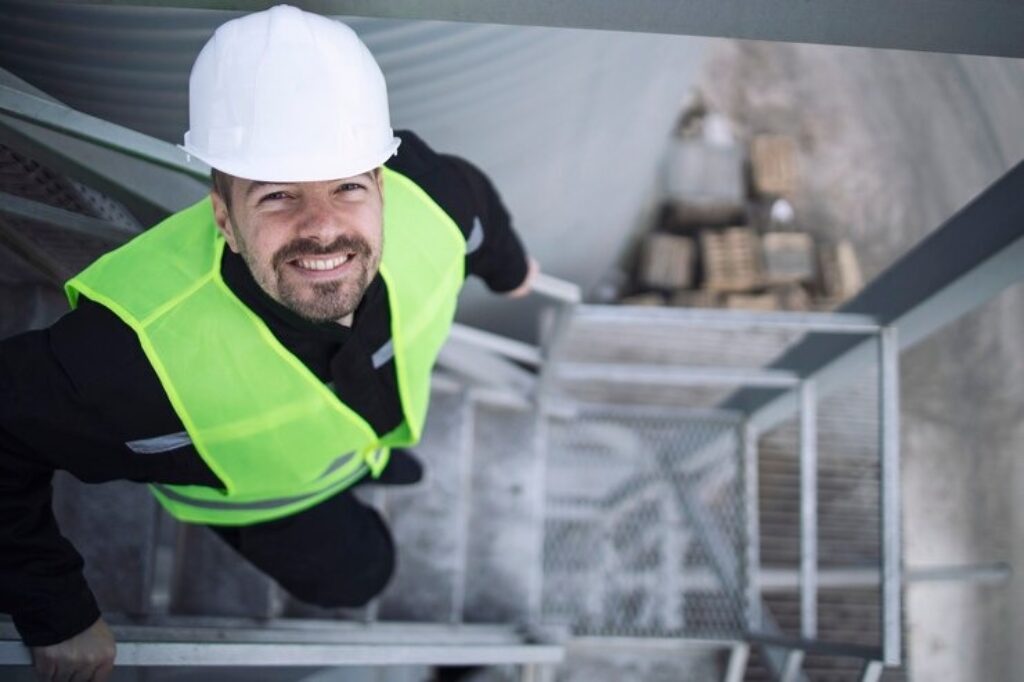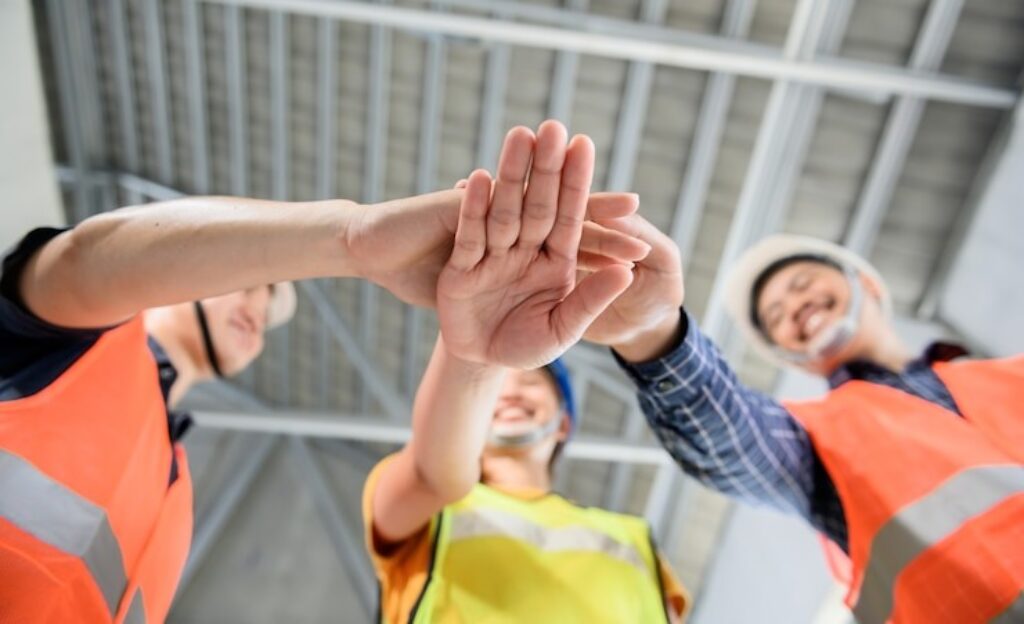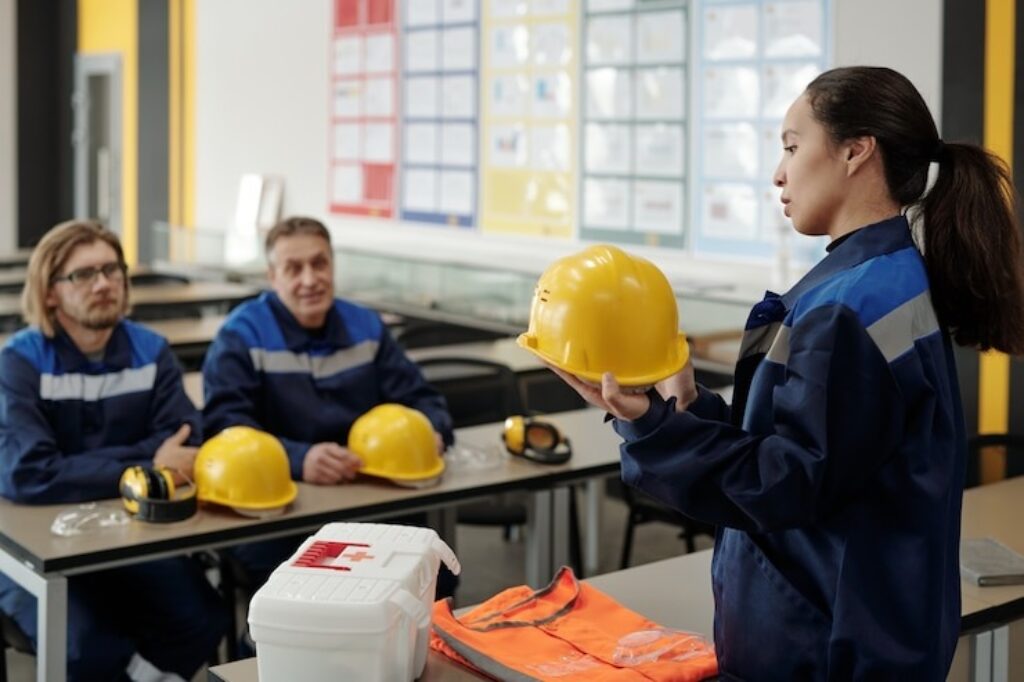
Unfortunately, it’s not enough for construction companies to simply offer protective equipment and control for a few risks. If you want to significantly reduce the risk of injury or harm in the workplace, it’s also essential to establish a culture that prioritizes safety. But why is this culture so important and how do you establish it from the beginning?
The Value of a Safety Culture

Source: freepik.com
Developing a safety culture is part of a comprehensive safety program that can minimize the risk of injury and harm on your job-sites. Essentially, it means creating an environment that naturally promotes and encourages safety, while discouraging unsafe activities and holding parties accountable when they fail to comply with safety standards.
Promoting this type of culture is useful for several reasons.
- It’s foundational: When safety is a part of your culture, it becomes foundational to your enterprise. It’s not some optional set of standards that employees can choose to follow. It’s also not a documented procedure that could eventually get lost or compromised. It’s baked into the fabric of your organization, allowing it to permeate every job-site – and every individual mind.
- It’s a guide at every point: Keeping a workplace culture that values safety also serves as a guide in every decision your organization makes. When you hire new candidates, you’ll have to think about their ability to follow safety procedures. When you purchase new equipment, you’ll need to think about how it will affect safety and how you can make it safe to operate. It’s a tool for thinking that allows for safer decision making.
- It naturally encourages compliance: You can have whatever safety rules you want; if your team members flagrantly disobey those rules, they’re practically meaningless. Obviously, enforcing the rules with serious consequences can keep people in line. But it’s even more effective to naturally encourage more compliance with these rules through the promotion of a culture of safety. With a shared set of standards, people are much less likely to deviate from safety requirements and recommendations.
- It helps close gaps and address ambiguities: Finally, having a safety culture helps to close gaps and address potential ambiguities. No matter how robust or thorough your safety procedures and training regimens are, there are probably going to be instances where the best course of action is uncertain or when employees aren’t sure what they’re supposed to do. Having a safety culture means that even in these unclear instances, employees will act with safety in mind.
How to Establish a Culture That Prioritizes Safety

Source: freepik.com
So how do you create this type of culture from scratch?
- Start with core values and philosophies: If you want to have a thriving culture of safety, you need to establish core values and philosophies that make safety a priority. Even simple, potentially overused adages like “safety first” make an impact on how people perceive their working environments and how they collaborate with each other.
- Set and adhere to specific safety goals: Your workers are much more likely to take safety seriously if your organization sets and adheres to specific safety goals. For example, you might set a goal to have zero workplace injuries for a given period of time; you can promote this goal with visuals and celebrate achieving the goal once you reach it. Keeping the goal top of mind makes employees feel like safety is a part of their everyday professional lives.
- Establish safety as the top priority: Make it absolutely clear that safety is the top priority of your organization. Oftentimes, injuries and accidents occur because employees choose to compromise safety in pursuit of some other priority, like productivity, meeting a deadline, or avoiding effort. If you and your leaders consistently compromise all other priorities when those priorities are in conflict with safety, employees will do the same.
- Demonstrate good leadership from the top down: In line with this, it’s important to demonstrate good leadership from the top down. Whether they admit it or not, employees generally act in line with the leaders above them; if your leaders consistently take safety seriously and reprimand employees who break safety rules, employees are going to be much more likely to take safety seriously as well. This needs to go all the way up the chain, to the top leaders of your organization.
- Hire the right people: Of course, you also need to think about the bottom-up dynamic as well. That means deliberately hiring people who you know would make good, safe additions to your team. Carefully screen all your job applicants and ask them questions about safety and how they would handle workplace accidents. Prioritize candidates who understand how important workplace safety really is.

Source: freepik.com
- Train and educate: Provide the best training and education you can to your employees. Onboarding and training is a critical time for professional development; this is your opportunity to give employees the resources and shape the attitudes they need to be safe.
- Keep communication open: Openness and transparency in the workplace can also make your workplace environment safer. In an environment where employees can speak their minds, free of retaliation, they’ll be much more comfortable reporting potential safety hazards and deviations from best practices. Regularly talk with your employees so they feel comfortable addressing issues with you.
- Encourage reporting: Similarly, it’s important to encourage reporting. Sometimes, employees will fail to address or report incidents out of fear of retaliation or punishment. It’s important to make clear that incident reporting is valuable, and that it won’t mark anyone as a target for retaliation.
- Cultivate and act on feedback: Finally, collect employee feedback as often as you can. Whenever employees have new thoughts or suggestions for how to improve safety, take those items seriously and consider acting on them.
If you already have an organization in place with no scaffolding for safety culture, creating safety culture from scratch can be a challenge. However, it’s a challenge worth taking on, since as a result, your prioritization of safety will make your job-sites much safer – and allow your construction business to thrive.







